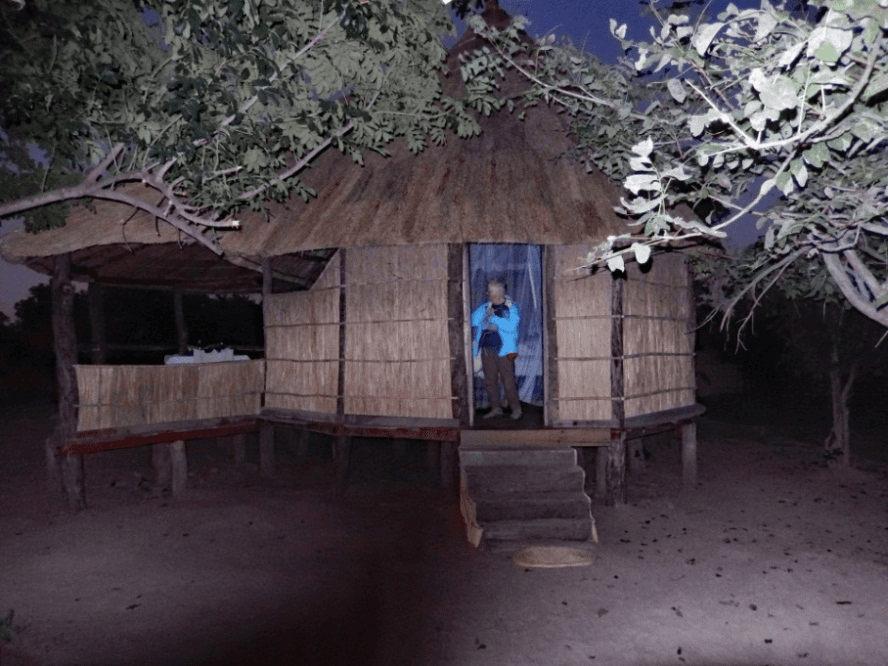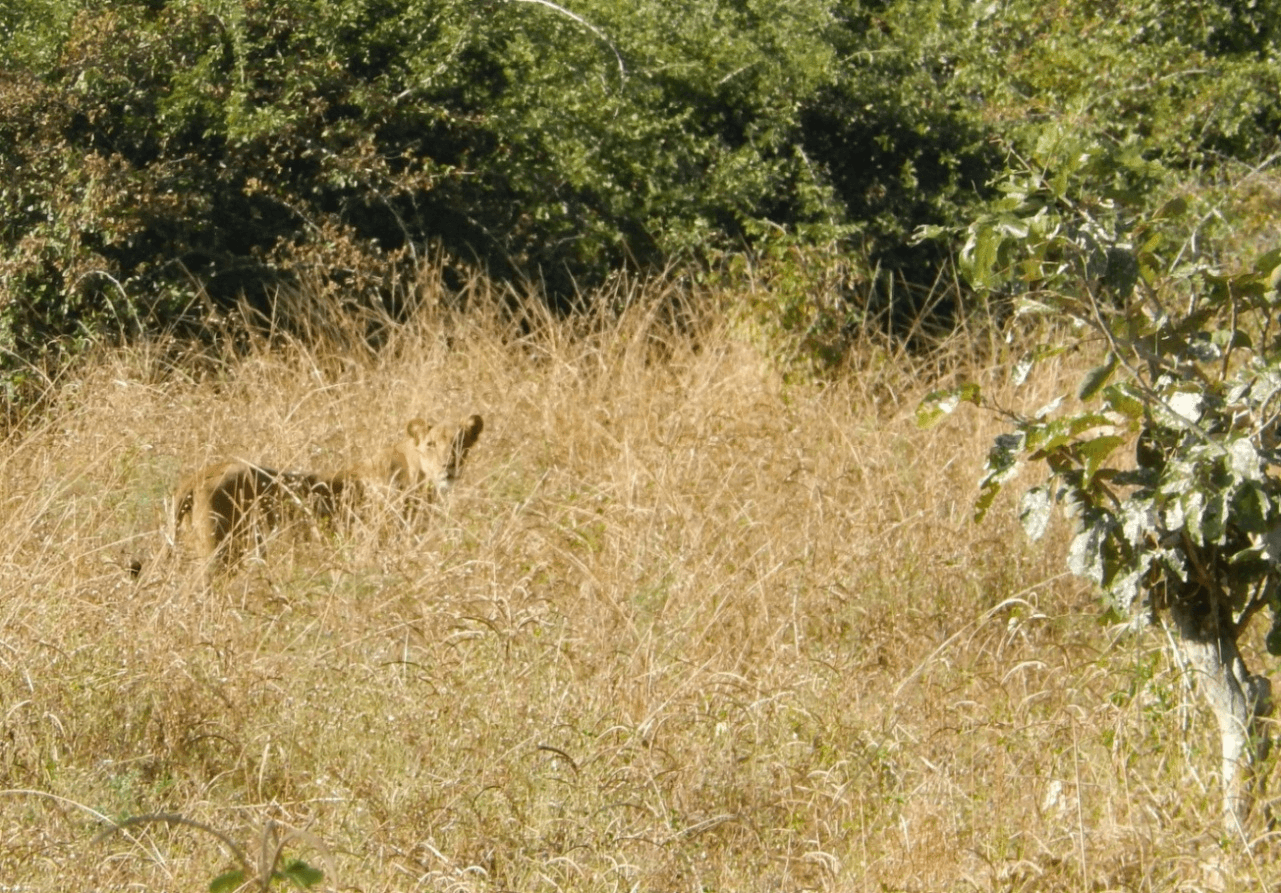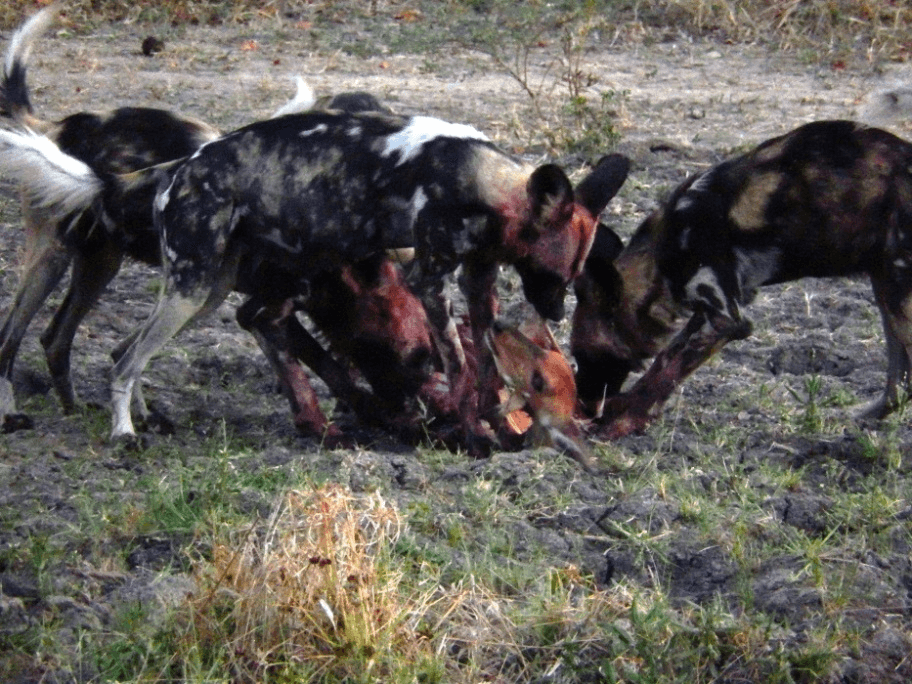Tracking Lions on Foot in Zambia
Six of us were on foot following fresh tracks of a lion pride in Zambia. I was in the rear and the guide assured me that I need not watch behind me; that anything interesting or dangerous would be visible in front. My instincts drove me to check my rear repeatedly.
We were staying at Nsolo Bush Camp, a group of just four chalets built on stilts, nestled together on the banks of the Luwi River deep in the heart of South Luangwa National Park in Zambia. This is Africa tourism at its finest. Incredible remoteness. Primitive yet safe accommodations. Gourmet food. A+ service. Find the official description of Nsolo Camp at normancarrsafaris.com/#!/camps/nsolo, although the best description can be found at expertafrica.com/zambia/south-luangwa-national-park/nsolo-bushcamp/in-detail. After two days of game drives and walking safaris, we were going out to see if we could locate a pride of lions who had been hunting in the area . . . and we were going to do it on foot.

Only two of the chalets were occupied: Ginny and I in one and a family from Ithaca, New York in the other. Six of us boarded the Land Rover: Ginny and I, the couple from New York, a camp naturalist/guide, and a uniformed/armed “ranger.” We drove until our guides spotted the lion tracks on the dirt road we were driving on and we followed the footprints for a mile or so. When the prints turned off the road, we parked and followed the pride on foot. The guide and ranger led the procession. I was the caboose, and I thought I was dinner.

We followed the tracks for about a mile. Every few hundred feet, the two guides would stop, crouch, look at a paw print in the sand and discuss something about it.
At one point during the hike, I could tell from my vantage point that something of significance was happening up front. The guide and two of the tourists in front of me had their hands out to signal “stop!” I stopped. In a few minutes they signaled to approach slowly and quietly. As we all gathered facing a small outcropping of bushes (seen just in front of the forward trekkers in the photo above), they briefed me: they had just seen a lioness and her two cubs dash into these bushes right in front of us. I had missed it, but I was soon convinced that this had not been an apparition. Within a few seconds, we heard a constant deep growling sound. The ground was vibrating like the subwoofer of a teenager’s tricked out car. It was the lioness warning us that we had approached her hideout as close as we dared.
We stepped back about 50 feet and the growling ceased.
We went around the grove of bushes, giving the lioness and her cubs plenty of room, and continued in the same direction we had been headed, once again on the path of the pride. Based on the freshness of these tracks, the guides explained that they believed that the pride was “just ahead” and must have left the lioness here so they could hunt without endangering the cubs. We walked another mile or so and then noticed that the tracks made an abrupt turn to the left off the trail we had been following. We all stood erect and looked to the left to see what we could see. I could see nothing of interest. Then the two guides started pointing out dozens of pairs of ears in the grass just a few hundred feet from us. I was able to catch only one on camera; see photo below. As we shifted our positions slightly, we were able to make out the forms that were attached to those ears. Soon they stood and stared back.
All of the lions seemed to be staring at us. But the guides assured us that the lions of South Luangwa see primates standing on hind legs as a source of confusion more so than as a source of food. If they were in fact looking at us it was to try and figure out what we were, but more than likely they were not looking at us at all.

Then we looked to the right. There we saw what the lions were watching so intently. It was their favorite food: African buffalo aka Cape buffalo (fortunately not people). We had been tracking the pride of lions while the pride of lions had been tracking a huge herd of buffalo. We were between the lions and their food. Not as dangerous as it sounds, but we were likely an annoyance for the lions. We decided to hike back to our vehicle. Enough excitement for one day. As we retraced our steps, we gave the grove of bushes harboring the lioness and her cubs a wide berth.

As those of you who have been on night drives in the African bush are aware, you never know what you will see on such a ride. You could drive for hours and see nothing; or you could drive right into something very exciting or rare. Before I close this story on Zambia, I wanted to share a bit about one of the game drives we took the night before the above lion tracking adventure. We had been driving for hours and had seen very little, and then all of a sudden we came around a bend and there, right in front of us, was an enormous amount of activity. A pack of African wild dogs were viciously devouring a small antelope.

African wild dogs are not feral domestic dogs; they are an endangered painted canine species with fewer than 7,000 individuals left in the wild. Adults weigh around 60 pounds (about the size of a German shepherd). Unique among predators of Africa, they do not kill their prey prior to consuming it. Fortunately, the antelope they were eating when we came upon them was already dead, but you can still see the antelope’s head just below the muzzle of the center dog in the photo. Incidentally, a pack can completely consume a small antelope in less than 15 minutes, so it was pretty amazing that we encountered this kill. These wild dogs are beautiful animals, but I do not think I’d like to meet one in a dark alley.
© Alan M. Davis
If you enjoyed this story, consider buying my book,
Unusual Africa: Traveling on the Edge. It contains this and twelve other stories of our adventures in Africa.